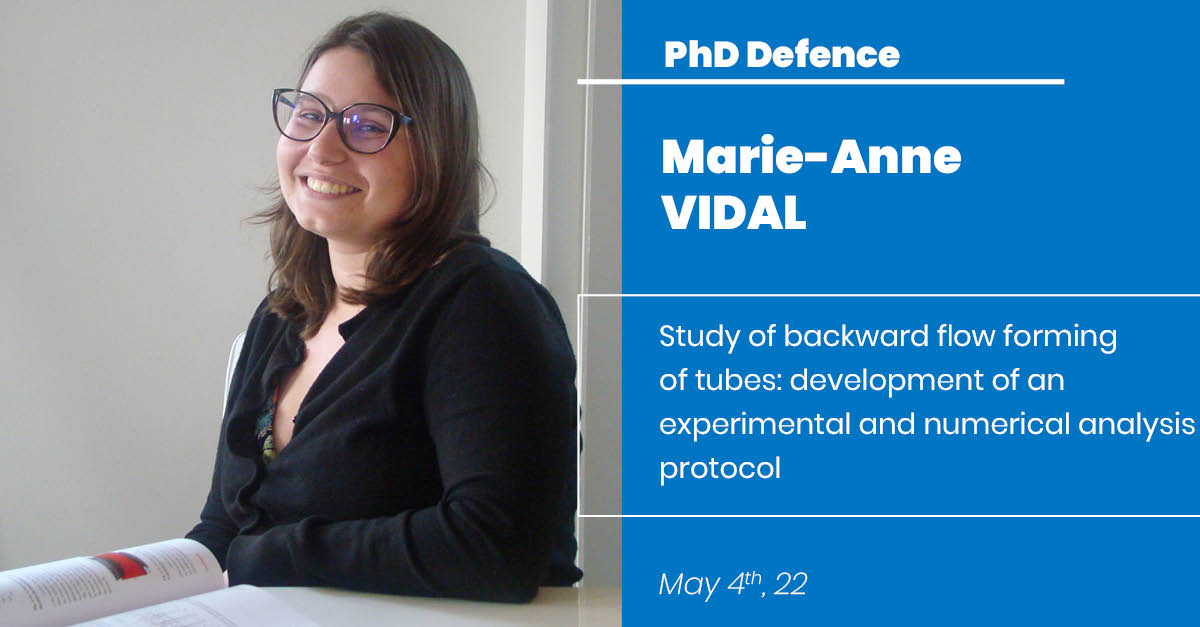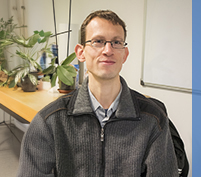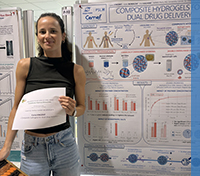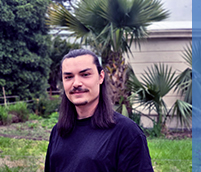PhD defence of Marie-Anne Vidal
7 April 2022
Marie-Anne Vidal defends her PhD in Computational Mechanics and Materials on May 4th, 22
Study of backward flow forming of tubes: development of an experimental and numerical analysis protocol

Marie-Anne Vidal conducted her PhD work in the CSM team, under the supervision of Katia Mocellin and Pierre-Olivier Bouchard. She defends her PhD in Computational Mechanics and Materials on May 4th, 2022 in front of the following jury:
– Tudor Balan ENSAM Metz
– Sébastien Thibaud, ENSMM Besançon
– Elisabeth Massoni, Mines Paris CEMEF
– Laurent Dubar, Université polytechnique des Hauts de France
– Dorian Depriester, ENSAM Aix en Provence
– François Frascati, MBDA
Abstract:
Flow forming is an incremental forming process producing thin tubes without any material loss and with enhanced material characteristics due to strain hardening. The objectives of this work are a part of MBDA’s approach to develop a study protocol on aluminum 6061 alloy in order to predict damage occurrence during the metal forming operation, and then to apply this protocol on a high performances material (HPM).
First, experimental flow forming campaigns were conducted on both MBDA device and lab-scaled device Fluoti at CEMEF in order to determine the influence of process parameters on flow formability (speeds, reduction ratio, initial thickness, number of passes…). Behavior characterization of the aluminum 6061 alloy was performed using compression, tension and torsion tests so that parameters of a behavior law could be identified and thus be integrated into FORGE® software for flow forming modelling.
The simulation set-up in FORGE® is crucial to find a compromise between long simulation duration and result precision. Those results of flow forming simulations (final tube geometry, loads on tools, fracture occurrence) were then compared to corresponding experimental configurations. The comparison showed good correlation between the geometries but a discrepancy on the efforts was found. The damage fracture criteria used were based on the first principal stress (Latham and Cockcroft), the first and the second principal stresses (McClintock), the stress triaxiality (Oyane) and the maximum shear.
Finally, the protocol was simplified based on the results on the aluminum 6061 alloy and transposed on the HPM to test its limits. Although no fracture occurred during the flow forming campaign on this material, the loads on the tools and the final tube geometries showed good agreement.
Keywords: damage, modelling, behaviour, flow forming








